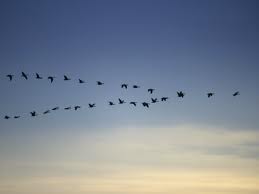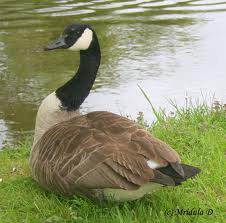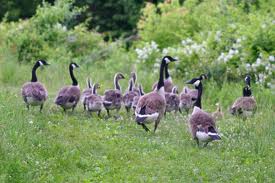Archive for the ‘Wildlife’ Category
5 Best iPhone Apps for Hiking — MyNature Apps
Posted in Backpacking, Gear, Hiking, Wildlife on October 29, 2013| 1 Comment »
Llama Trekking in Central New York State
Posted in Central NY, Hiking, Kid's Activities, Wildlife on October 3, 2013| Leave a Comment »
 Ever think your spouse would come home and say it’d be cool to own a couple llamas? Dawn Bishop didn’t know what she was getting herself into when her husband, John, proposed the idea. The couple started out exercising llamas at the New York State Fair, before eventually ending up with a llama trekking business in central New York state. Click here to read all about Llama Trekking in Central New York State.
Ever think your spouse would come home and say it’d be cool to own a couple llamas? Dawn Bishop didn’t know what she was getting herself into when her husband, John, proposed the idea. The couple started out exercising llamas at the New York State Fair, before eventually ending up with a llama trekking business in central New York state. Click here to read all about Llama Trekking in Central New York State.
Owl Prowl – Nov 2 at Iroquois National Wildlife Refuge
Posted in Hiking, Western NY, Wildlife on September 4, 2013| Leave a Comment »
Saturday, November 2, 6:30 p.m. — Iroquois National Wildlife Refuge, NY
Learn about owls. Then explore the refuge looking for them.
Pre-register: 585-948-5445 ext. 2205 or megan_davis@fws.gov.
PHOTOS: Two massive whales narrowly miss kayaker
Posted in Kayaking, Wildlife, tagged whales on August 30, 2013| Leave a Comment »
Here’s something you’ll never see in NY State: PHOTOS: Two massive whales narrowly miss California kayaker
Turning Point Park, a Gem of the Genesee, in Rochester, NY (with video)
Posted in Biking, Genesee River, Hiking, Rochester, Wildlife on July 4, 2013| Leave a Comment »
Click here to read Turning Point Park, a Gem of the Genesee, in Rochester, NY and watch a short video. It will make you want to take a trip there this summer for sure.
To explore this & many other Rochester area trails, pick up a Footprint Press guidebook:
It’s a snake! Call 911!
Posted in Adirondacks, Wildlife on June 25, 2013| Leave a Comment »
By Harry Chase, Wicked Local Mansfield, link to original post
My teenage nephew and I were hiking in upstate New York’s Adirondacks some years ago when we invented a snake story. We’d met three nervous hikers, all (judging by their accents) from the Big Apple, who asked the same question: “Are there poisonous snakes in these mountains?”
After three times answering “No” (not quite true, incidentally), we cooked up a different response for the next urbanite who inquired. “Well,” we planned to say, “only the deadly Gaboon viper. A mere fleck of its saliva will send you into convulsions, paralysis and an agonizing death.”
Good thing we didn’t meet another questioner, though I don’t think we‘d have insulted even the most gullible tourist with such a tale. But for the rest of our hike we had fun elaborating on the story.
I’ve always wondered why so many otherwise rational folks hate and fear snakes. True, there are venomous serpents that deserve cautious respect. Massachusetts (though not Mansfield) has two such species, the timber rattlesnake and the copperhead.
The former lives in isolated rocky areas on Great Blue Hill and in several other spots kept secret by herpetologists. The copperhead is almost never seen. I’m told that no one ever has died from the bite of a Bay State serpent.
The juvenile milk snake with its reddish markings is sometimes taken for a copperhead. I recall when a newspaper in a nearby town front-paged a photo of a firefighter posing like a big game hunter with a “copperhead” he’d vanquished. Next day’s paper pictured a zoo keeper smilingly fondling an identical but live serpent, which he correctly identified as a harmless milk snake.
A Mansfield woman once told me, with an embarrassed laugh, how she’d found a garter snake in her basement. She summoned her husband, who took one look and phoned the police. The cop, on arrival, was equally timid.
All three were standing around the inoffensive creature when a daughter arrived home from middle school and clobbered it with a shovel.
Even my land survey boss, an unflappable ex-Big Ten football lineman, asked me in some trepidation whether the swampy woods through which we were cutting a line harbored poisonous snakes. When I said, “Probably not,” he exclaimed “Probably! Even one poisonous snake is too many.”
Some people who walk in Mansfield’s woods tell me they avoid swamps “because that’s where snakes live.” This old swamp Yankee has never seen a snake in a swamp. The water snake, incorrectly called water moccasin, lives in our streams and often ventures on dry land but not swamps.
One local serpent that looks evil but isn’t is the hog-nosed snake, also called the puff adder. Disturb it, and it hisses, inflates like a bicycle tire and even strikes but won’t bite. If that bluff doesn’t scare you off, it rolls on its back and plays dead.
Some non-poisonous snakes will bite. My uncle Bill Chase, a state game warden, was demonstrating how a four-foot blacksnake, if coiled and placed on its back, wouldn’t move as long as it stayed in that position.
The snake took a dim view of the proceedings, sank its teeth into the skin between Bill’s thumb and forefinger and began chewing. Bill gently worked its teeth free, viewed the pin-pricks on his hand and said, “It’s like a kitten’s bite.” Luckily he never encountered the alleged 12-foot blacksnakes reported by a Mansfield character who’d imbibed too much pink-elephant juice.
Maybe people hate snakes because the Bible tells how a serpent sweet-talked Eve into nibbling the forbidden fruit. As punishment, God cursed the serpent and told it, “Upon your belly you shall go, and dust you shall eat all the days of your life.”
I don’t think snakes deserved that fate. Besides, this is the Chinese Year of the Snake. Let’s live and let live.
Porcupines Increasing along NY Trails – Dogs Beware
Posted in Backpacking, Finger Lakes Trail, Hiking, Wildlife on June 6, 2013| Leave a Comment »
Joe Dabes and others have reported more frequent sightings of porcupines along the Finger Lakes Trail. Generally they’re not much of a threat to humans (they’re more likely to climb a tree and curl into a ball when they see you) but, it’s highly recommended that you keep dogs leashed on the trails. When a dog encounters a porcupine, it’s not a pleasant experience for the dog – often requiring a trip to the vet.
Sherrie suggested sprinkling Critter Ridder granules under your car (organic and biodegrades) if you’re leaving it near a trail overnight. Porcupines have been known to chew up all of the rubber under the hood of a car (transmission lines, radiator hose, brake boots, etc.).
Spring Migration and Canada Geese
Posted in Wildlife on April 24, 2013| 1 Comment »
 All across North America, Canada Geese are leaving their winter homes to migrate to their breeding grounds in Canada and the northern United States. Over the next month they will gather in flocks by the thousands as they journey north to their breeding grounds to raise the next generation of geese. Canada Geese nest from the Arctic Circle all the way down to the Midwest in habitats as varied as arctic tundra to mall parking lots. Once on their breeding grounds, Canada Geese will begin to “pair up” and will quickly start building nests for raising their young. The timing of nesting varies depending on latitude, with northern birds nesting later than southern birds, but it usually takes place from mid-March to mid-May. Canada Geese nest in a variety of habitats, but almost always nest within 150 feet from a body of water. Females will make a nest in the shape of a cup placed directly on the ground and construct it out of mosses, grass, and feathers. The female will lay anywhere from 2 to 12 eggs with an average of five being the most common. Both male and female will guard the nest vigorously against predators or intruders.
All across North America, Canada Geese are leaving their winter homes to migrate to their breeding grounds in Canada and the northern United States. Over the next month they will gather in flocks by the thousands as they journey north to their breeding grounds to raise the next generation of geese. Canada Geese nest from the Arctic Circle all the way down to the Midwest in habitats as varied as arctic tundra to mall parking lots. Once on their breeding grounds, Canada Geese will begin to “pair up” and will quickly start building nests for raising their young. The timing of nesting varies depending on latitude, with northern birds nesting later than southern birds, but it usually takes place from mid-March to mid-May. Canada Geese nest in a variety of habitats, but almost always nest within 150 feet from a body of water. Females will make a nest in the shape of a cup placed directly on the ground and construct it out of mosses, grass, and feathers. The female will lay anywhere from 2 to 12 eggs with an average of five being the most common. Both male and female will guard the nest vigorously against predators or intruders.
 Historically, Canada Geese would breed on lakes, marshes, and tundra, however, in recent decades many geese have taken to breeding in urban environments. Many of these environments share characteristics with their natural habitats. Golf courses, airports, and open lawns are similar to their natural habitat of the tundra in that all offer vast open spaces filled with grasses and other low vegetation that Canada Geese like to eat and nest with. These open spaces also make it easy for geese to see approaching predators and because of this they feel safe nesting in these places.
Historically, Canada Geese would breed on lakes, marshes, and tundra, however, in recent decades many geese have taken to breeding in urban environments. Many of these environments share characteristics with their natural habitats. Golf courses, airports, and open lawns are similar to their natural habitat of the tundra in that all offer vast open spaces filled with grasses and other low vegetation that Canada Geese like to eat and nest with. These open spaces also make it easy for geese to see approaching predators and because of this they feel safe nesting in these places.
Their affinity for urban nesting sites has brought Canada Geese into conflict with humans and many urban Canada Geese are now considered pests. Not only does their prolific pooping anger golf course managers and park goers, their size and attraction to airports for nesting sites has made them a real threat to air safety, and they are considered to be the species that poses the greatest and most dangerous threat to aviation. They are not the most common bird involved in air strikes, but they do cause more damage to aircraft than any other species.
 What can you do?
What can you do?
There are a few things that can be done to discourage Canada Geese from nesting on airports, most of which involve habitat management and include:
·Allowing grasses to grow to a higher level. Geese prefer shorter grass because it allows them to access the shoots more easily.
·Planting tall shrubs or trees in open areas will also reduce the attractiveness of a site. Geese prefer areas without this type of cover so predators cannot approach them unseen.
·Preventing Canada geese from being able to move from grazing/nesting areas to water without flying is another effective habitat modification. This can be accomplished by installing fencing, placing boulders, or planting tightly growing shrubs around open water.
·Habitat can also be modified by planting less desirable grasses and other plants. For example, Canada geese may avoid tall fescue (Festuca arundinacea) that contains an endophytic fungus.
Loomacres Wildlife Management
P.O. Box 361 – Warnerville, NY 12187
(800)243-1462 – info@loomacres.com
http://www.airportwildlife.com/
Wildlife Tracking in the Adirondacks (PHOTOS)
Posted in Adirondacks, Wildlife on March 29, 2013| Leave a Comment »
River otters in the Finger Lakes
Posted in Finger Lakes, Wildlife, tagged Hi Tor Wildlife Management Area on January 19, 2013| Leave a Comment »










